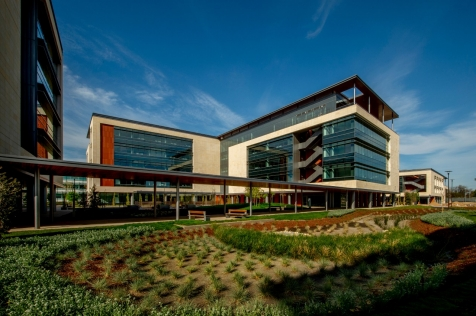Stanford withdrew its proposed General Use Permit (GUP) on Nov. 1, just five days before the Santa Clara County Board of Supervisors was set to vote on its approval. Since then, housing activists, the neighboring community and County officials have been waiting to see what lies in store for the future of the University’s expansion and for the County.
From Stanford’s perspective, the GUP broke down because the County would not consider negotiating a development agreement, which the University had been pushing for since the permit’s conception in 2016.
“Our goal was to address many of the issues we heard, including requests from neighboring communities for substantial benefits that by law cannot be required as part of the approval process, through what is known as a development agreement,” wrote Stanford President Marc Tessier-Lavigne wrote in an email announcing the withdrawal to the University community.
He went on to describe the development agreement as an “essential condition” of any future plans for Stanford, because it would have provided a “protection of predictability” regarding the land use regulations to which the University would be subjected.
“Unfortunately, the process to define these benefits and achieve this predictability never got going,” Tessier-Lavigne wrote.
In an email to The Daily, Stanford Community Relations & Land Use Communications Officer Joel Berman addressed the halt of the GUP process and how it has affected Stanford’s future development plans.
“While the withdrawal of the application impacts our ability to add buildings on campus, we have taken this step with an understanding of the variety of options available to the University for its space needs,” he wrote.
According to Berman, Stanford will alter its plans for expansion to comply with existing regulations. These strategies might include taking advantage of the remaining square footage allotted by the 2000 GUP, renovating or replacing older buildings to create new facilities without adding square footage, or developing more academic spaces at the Redwood City campus.
Two weeks prior to the permit’s withdrawal, over 100 Stanford students and community members gathered outside city hall during the final public hearing of the GUP process. The demonstrators, led by the student housing advocacy group Stanford Coalition for Planning an Equitable 2035 (SCoPE), turned up to demand Stanford fully mitigate any additional housing demand that future expansion plans would generate — especially given the Bay Area’s housing market is already in crisis.
Amulya Yerrapotu ’20, writing on behalf of SCoPE in an op-ed for The Daily, characterized the permit’s withdrawal as “shameful.” Rather than accommodating the County’s proposed housing requirements, Stanford is simply stalling the process, SCoPE activists claim.
“Stanford is waiting for student activists to graduate, for County Supervisors to term out and for the community to forget,” she wrote. “Once that happens, Stanford will submit the same application again with nothing changed, and expect to get away with providing the bare minimum for its community.”
County Board of Supervisors President Joe Simitian, as well as supervisors Cindy Chavez and Dave Cortese, are all up for reelection in 2020. Even with the potential for considerable turnover in Santa Clara, the University may face substantial opposition from adjacent counties.
“They’ve woken up a sleeping dragon,” San Mateo District 3 Supervisor Don Horsley told the Palo Alto Daily Post, describing the greater community’s response to Stanford’s planned expansions.
A number of cities in San Mateo have formed a coalition pressuring Stanford to fully mitigate the housing and traffic demands created by any additional expansion. Horsley said anything less than full mitigation on the University’s part will be met with community resistance, even if he or Simitian no longer hold their board positions.
“There is so much motivation that Stanford will still have to deal with us,” he said.
The University, however, has maintained that it does not have any concrete plans to submit a new permit proposal.
“At some point in the future, we may come forward with a new long-term land use plan for our academic campus,” Berman wrote. “However, we do not currently have plans to do that, and we are taking this moment to assess all aspects of our strategic facility and programmatic needs.”
Contact Grace Carroll at gac23 ‘at’ stanford.edu.
